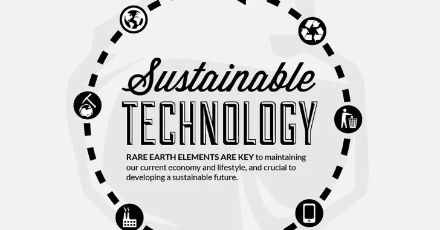How Do I Calculate My Organization’s Greenhouse Gas Emissions?

Accounting for your organization’s greenhouse gas emissions may seem daunting, but in this blog post, we’ll help break down the process into simple steps to help you get started.
Your GHG Questions Answered

Do you have questions about GHGs, decarbonization, and carbon accounting? Get the answers in our greenhouse gas FAQ round-up.
How To Use Internal Carbon Pricing in a Meaningful Way

Setting an internal carbon price can help you draw direct connections between emissions reduction goals and business goals.
Streamlining Decarbonization (Webinar Recap)

Decarbonization has become one of the ruling topics in the ESG space, but for many companies, it may seem like a daunting undertaking. It doesn’t have to be.
Disclosure in 2022: This Year’s Key CDP Takeaways and Trends

From transparency in emissions data to ESG target integration, here’s what we learned over the 2022 CDP reporting season and what you can do to prepare for what’s ahead.
How Do I Calculate Scope 3 Emissions?

Looking to learn more about GHG inventories, including scopes 1, 2, and 3 emissions? In this post, ADEC ESG analyst Tyanna Bui explains scope 3 emissions and how to calculate them.
Carbon Offsets Explained

We explain carbon offsets: what they are, what they do, and how you can determine whether or not they’re right for your organization.
How Accurate are the Ford Government’s Numbers to Dismantle the Cap-and-Trade Program?

One of the first actions the new Conservative government of Ontario took was to start dismantling the cap-and-trade program—an electoral promise made by Premier Ford when he interchangeably called the program a “carbon tax.”
What is the Downside to Cap and Trade?

Since Ontario started its cap and trade program on January 1, 2017, it has generated CAD$2.4 billion dollars in revenue for the province in 5 auctions – money allocated for carbon reducing projects. But, what about the downside?
Ontario Now Has the Second Largest Cap and Trade Market in the World!

The second largest carbon market in the world was created on January 1, 2018 when Ontario’s cap and trade program was linked with those of California and Quebec in the Western Climate Initiative (WCI). This means Ontario, California, and Quebec will be holding joint auctions of greenhouse gas (GHG) emissions allowances, and also have harmonized regulations and reporting. The international provincial and state governments’ announcement made on September 22, 2017 pledged for them to work cooperatively. By doing so, they are effectively bypassing climate action delays or inaction at the federal level of government, and already this has had an impact on other international cap and trade programs.
If the Cap-and-Trade Charge Is Not a GHG Emissions Tax, Then What Is It?

When the cap-and-trade charge was added to Ontario consumers’ bills for fuel at the pump, electricity, and natural gas, the public reacted like it was another tax.
Why the Ontario Cap and Trade Program is Here to Stay

Some in the business community are uncertain whether the Ontario Cap and Trade (CT) program will survive a Progressive Conservative win in the provincial election scheduled next year, but there is no need to worry.
More Transparency is needed in Ontario’s Cap and Trade

More needs to be done to ensure the success of Ontario’s Cap and Trade (C&T) program; otherwise misinformation and misunderstanding will be manipulated by politicians and others to scuttle it to keep the status quo.
The Commercial Viability of Carbon Capture and Storage to Mitigate Carbon Dioxide Emissions

Carbon Capture and Storage is not new – there are several different CCS technologies, and the CO2 can be stored underground or underwater.
Is a Carbon Tax the Same as Cap and Trade?

There is a lot of confusion between cap and trade (C&T) and a carbon tax. This blog will clarify the difference.
Should a Natural Forest Count as a Carbon Credit?

Yes, of course, it makes sense for natural, existing forests to count as a credit in carbon cap and trade, but right now they don’t. Urban forests should also count as a carbon credit, but don’t.
Why Should Companies Voluntarily Participate in Carbon Cap and Trade?

Voluntary participation in carbon cap and trade is one of those things that is worthwhile to do even though not everyone is doing it, and it does require some effort.
What Does 10,000 tons per year of GHG Emissions Look Like?

On May 18, 2016 the Ontario government gave royal assent to legislate the Climate Change Mitigation and Low-carbon Economy Act, which implements the Cap and Trade Regulation effective July 1, 2016.
How Tech Companies are Promoting Sustainability

Tech companies realize that sustainability is a good investment.
COP21 Summit: Highlights and Key Takeaways

The 21st session of the Conference of Parties (the COP21 summit) began with a lofty goal, aiming to achieve a legally binding agreement among all nations to limit global warming to below 2°C by 2100.
Setting Emissions Reduction Targets within the Corporate Sector (Part 3)

Check out Part 1 and Part 2 of this series if you missed it! What are some methods for setting science-based targets?
Why Your Business Needs a Sustainability Plan

As the private and public sectors continue to develop their sustainability plans to demonstrate their commitment to the environment and the wellbeing of their communities, the private sector faces the challenge of ensuring the long-term viability of their operations and the wellbeing of their clients and consumers.
5 Organizations with Leading Energy Innovations

Environmental problems such as global warming and the depletion of resources occur due to the rapid acceleration of global consumption.
The Importance of Sustainability Reporting

Many investors recognize that sustainability is a long-term goal that will define the business model and advance from limited practice among eco-friendly business leaders.
A Brief History of the Global Carbon Market

People all over the world are striving for a greener, more sustainable Earth. Regulators, governments and consumers are aware of the benefits of promoting sustainable practices. In doing so, a greater value is being placed not only on health and safety, but on the environment as well.
The Need to Optimize an Organization’s Supply Chain

The ability of a company to be sustainable is no longer an option: it has become a necessity. In doing so, organizations must learn to prioritize the optimization of their supply chain operations. Today, major organizations worldwide are utilizing sustainability measures to reduce their carbon emissions.
Benchmarking Climate Change Performance Across Supply Chains

Supply chains are businesses’ lifeblood—they are the means through which products and services are created and delivered to the customer. Supply chains are where one can see how raw materials travel and transform into goods. They also reflect companies’ value chains, indicating cash outflow from costs of raw materials and resources along with profits from customers’ purchase of their products.
Achieve Environmental Sustainability in Style

There is no doubt that a large number of today’s world population takes into consideration the harmful impacts of their everyday socio-civic activities on the environment. The slowly diminishing natural resources due mostly to man-made errors have become a global issue that our world needs to address immediately. With this in mind, many organizations are now more conscious in their efforts to do their part in preserving our environment and its natural resources and, more importantly, lessen the carbon footprints they leave
Value Chain Assessments and Engagement: UK Businesses’ Preparation for International Climate Change Impacts

With almost 200 years’ experience in handling continuous modernization and industrialization, businesses, governments, and citizens of the United Kingdom (UK) are now working to ensure that economic growth is sustainable and securely meets the needs of future generations.
NASCAR’s Sustainability

NASCAR has taken several steps to make the sport exactly that – more sustainable. This blog provides a glimpse into the steps NASCAR has taken to make the sport “greener.”